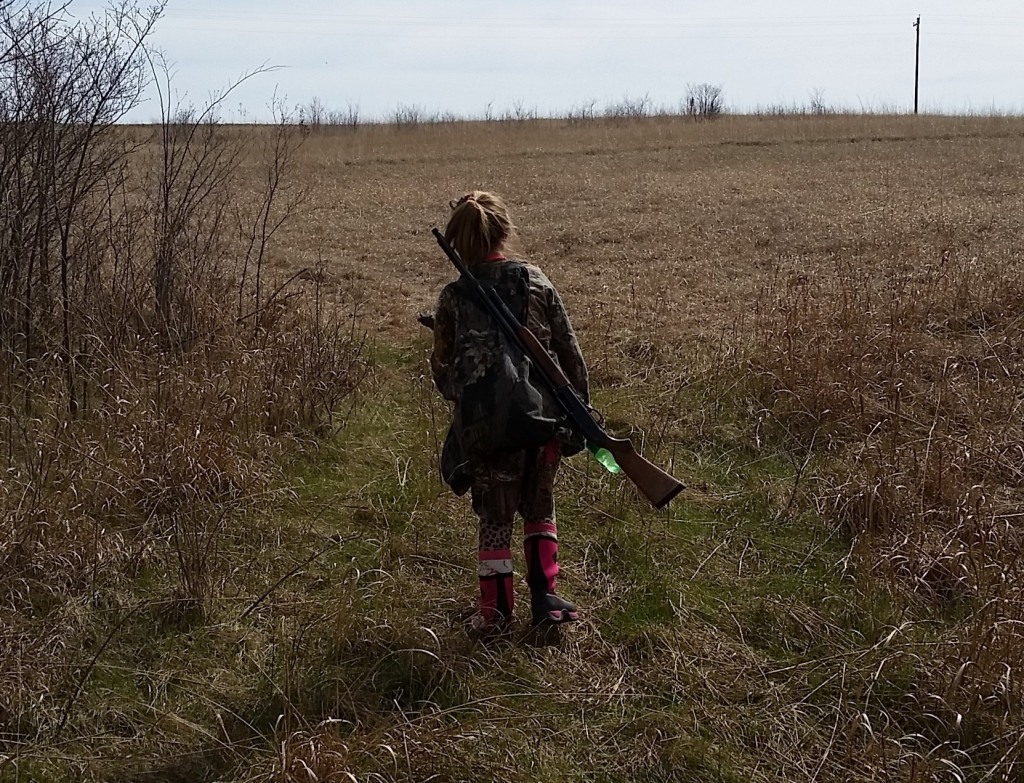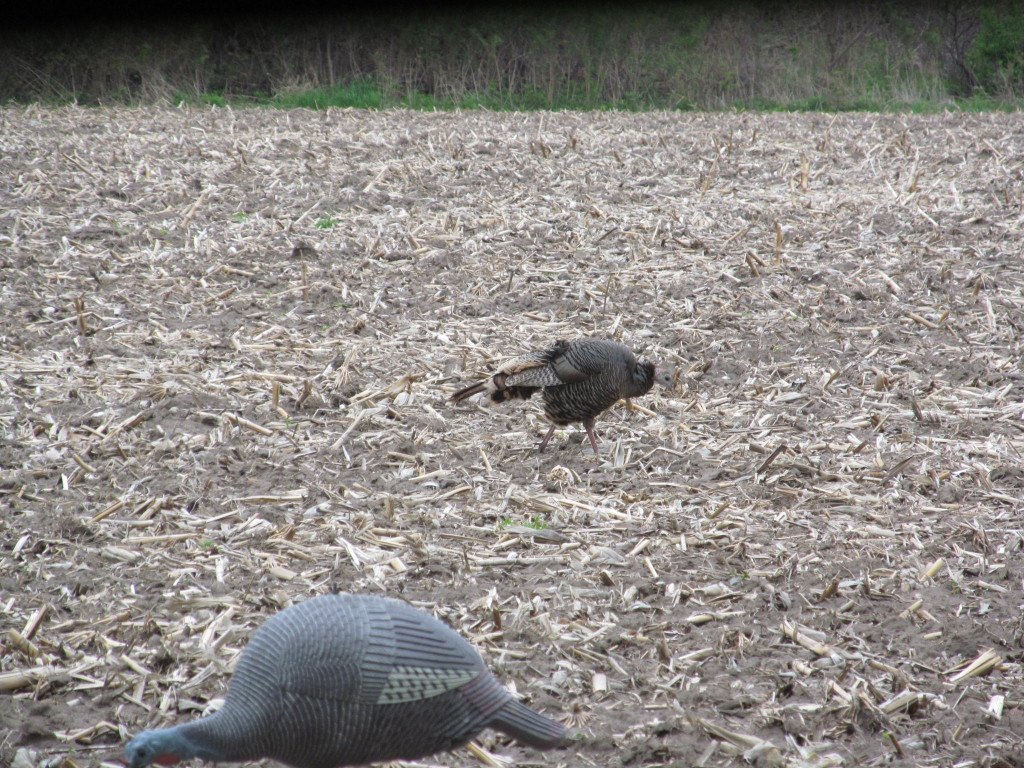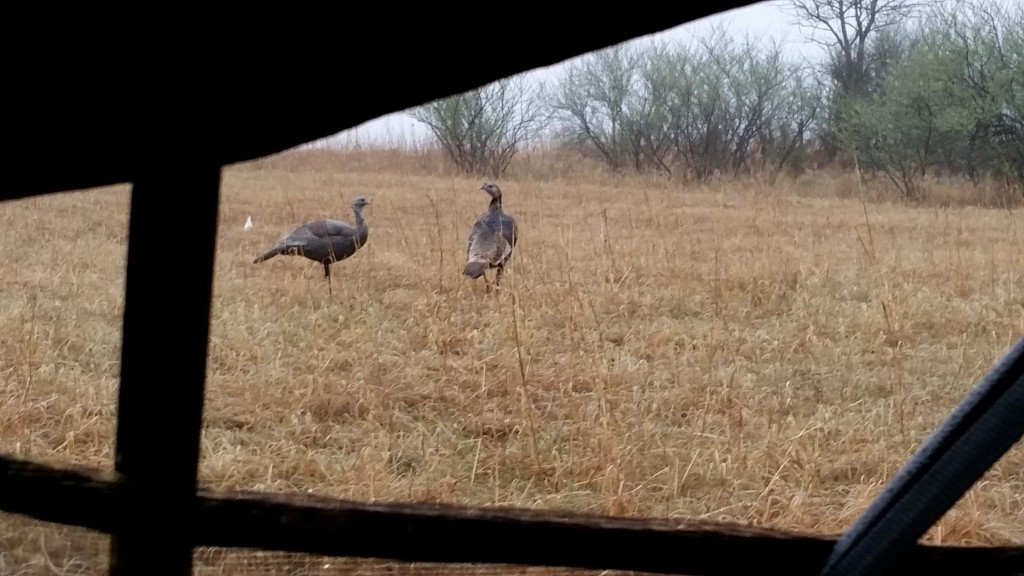 Still have an open spring turkey permit? Me, too. But with the season running until May 31 (what I believe to be the longest spring turkey hunting season in the U.S.) there is still plenty of time to get out and find a Nebraska gobbler or two. In fact, I think the best of the season is just getting started. Here’s why…
Still have an open spring turkey permit? Me, too. But with the season running until May 31 (what I believe to be the longest spring turkey hunting season in the U.S.) there is still plenty of time to get out and find a Nebraska gobbler or two. In fact, I think the best of the season is just getting started. Here’s why…
The spring hunting trips I have been on this year have been filled with talkative toms. Even when the weather has not been ideal the birds have gobbled a good amount. Morning, afternoon – all day. This isn’t unique in Nebraska. But for the most part the answering birds have drifted away from me. The gobbles growing more distant as I plead with them. Sometimes this has happened even after they initially had cut the distance between us significantly.
To me the reason for this is simple. Hens.
Hens are often our biggest competition in the spring. They are jealous and don’t play fair. We have to stay hidden as those feathered-ladies saunter right up to the tom and often lead him away. Part of it is the way nature intended it. A tom gobbles and interested hens make their way to him. They don’t share well. Especially with loud-mouthed, no-show hens.
Now you may get lucky and the flock just happens to come your direction – gobblers in tow. Deciphering which areas they frequent each day through scouting can be the difference here. Or maybe you are even fortunate enough to tick off the lead-hen and she comes to confront you – and again the gobbler gets dragged into your setup. Calling and recognizing when its time to try this technique is important to getting this to work. But more often the flock naturally drifts off in a direction away from you or the hens deliberately avoid competition and move away from your calling. Where the hens go the toms almost always follow.
But with April ending these same hens that have been cramping your success are starting to concern themselves more and more with actual egg-laying, other nesting duties and simply spending more time away from the gobblers. Gobblers that are without hens are easier to call in. This is really true the first few times the toms find themselves alone. Seeing more solo hens moving across the landscape is a good sign this is taking place. (afternoons are great for seeing this activity)
 But you must be patient. If you head out and hunt the sunrise chances are his gobbles will still draw the attention of a hen or two right off the roost. But as the morning wears on the odds the hens will leave increase. In fact, mid-morning to early afternoon may be the best time to call a lone gobbler in during this stage of the spring. Keep your ears open for an increase in gobbling as these lonely birds try to draw more hens to them. Find a likely spot and start making some soft hen music to gauge his response and move up from there.
But you must be patient. If you head out and hunt the sunrise chances are his gobbles will still draw the attention of a hen or two right off the roost. But as the morning wears on the odds the hens will leave increase. In fact, mid-morning to early afternoon may be the best time to call a lone gobbler in during this stage of the spring. Keep your ears open for an increase in gobbling as these lonely birds try to draw more hens to them. Find a likely spot and start making some soft hen music to gauge his response and move up from there.
 If using decoys be sure to have a hen or two. A good jake decoy can still be effective in using a gobbler’s aggression to your advantage. But I have found many gobblers have turned more lover than fighter at this time of the breeding and hunting season. Be sure to face it towards you so that old tom has to get closer and closer in hopes the fake-she will spot him and be impressed.
If using decoys be sure to have a hen or two. A good jake decoy can still be effective in using a gobbler’s aggression to your advantage. But I have found many gobblers have turned more lover than fighter at this time of the breeding and hunting season. Be sure to face it towards you so that old tom has to get closer and closer in hopes the fake-she will spot him and be impressed.
Right now I would plan to be in the turkey woods any chance you can. I really think the best hunts are just getting started. Now that those darn hens have some other things to do…
hershy
The post Those Darn Hens appeared first on NEBRASKALand Magazine.














